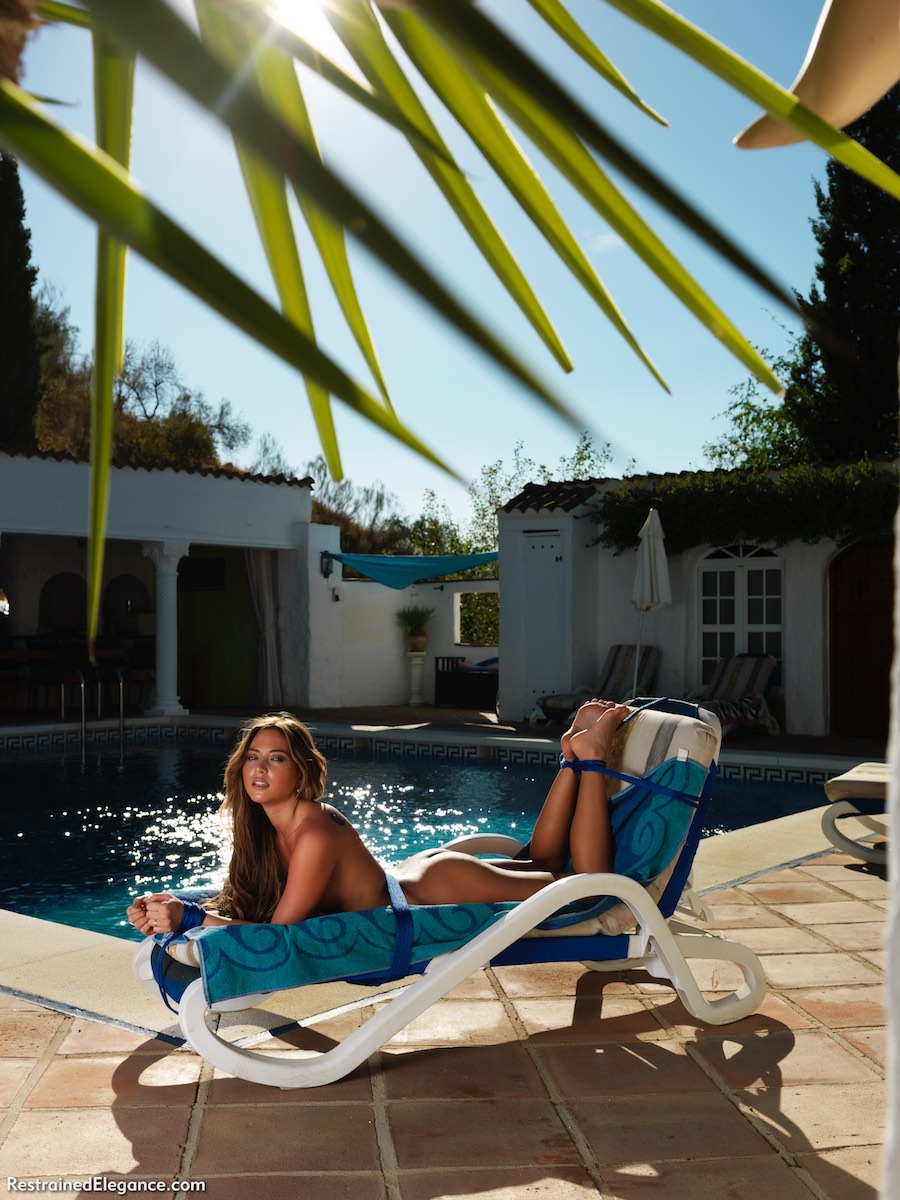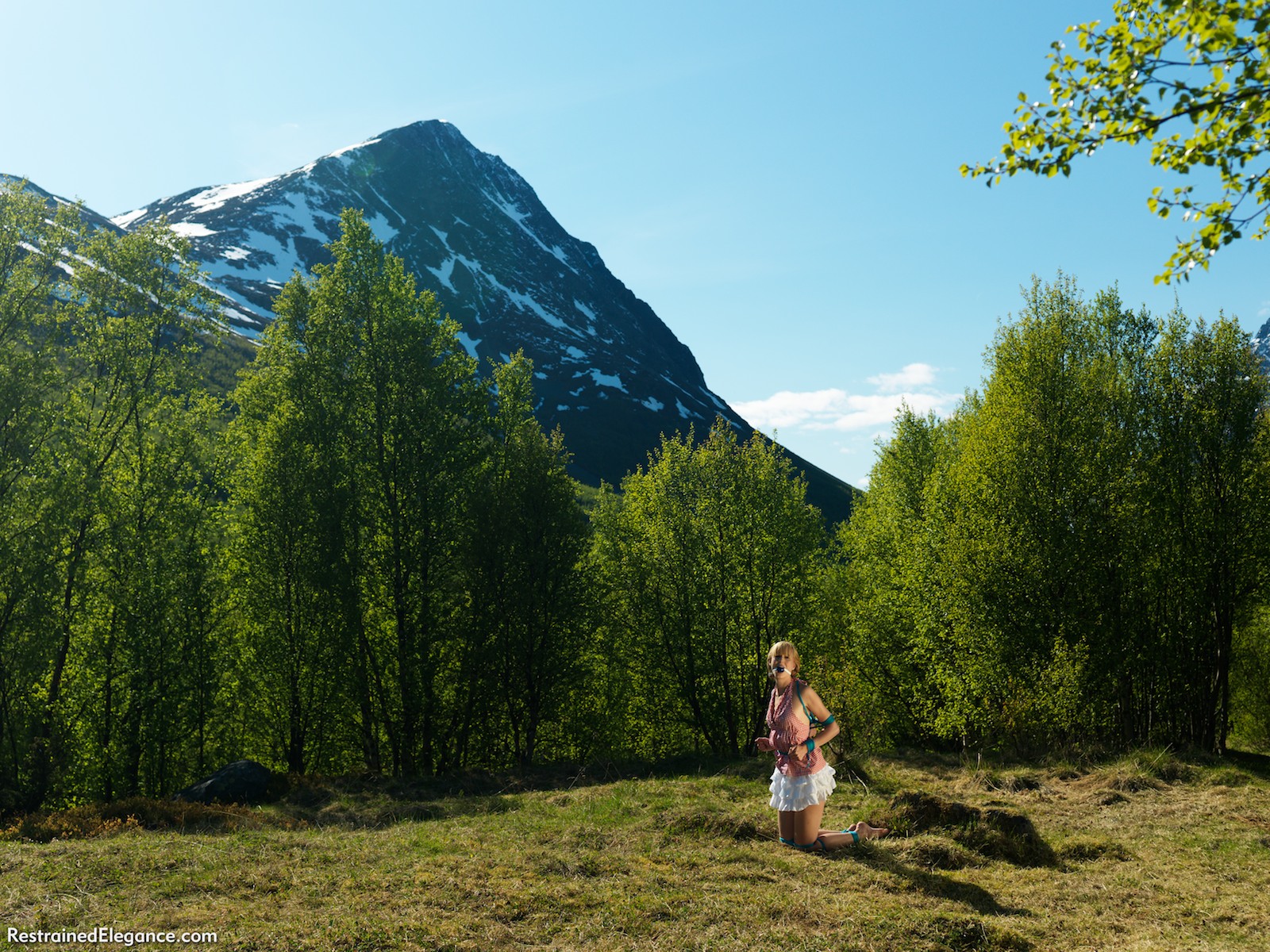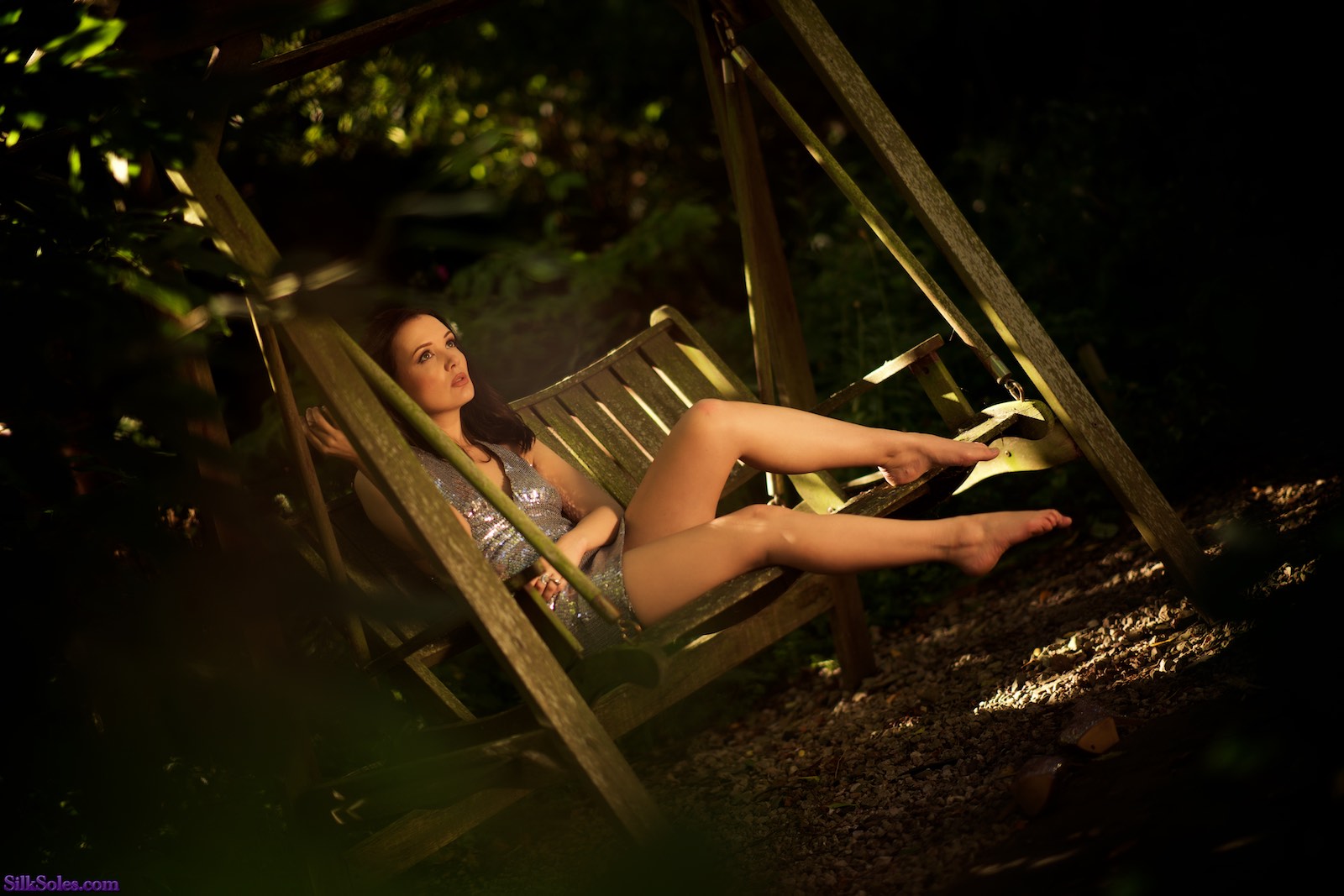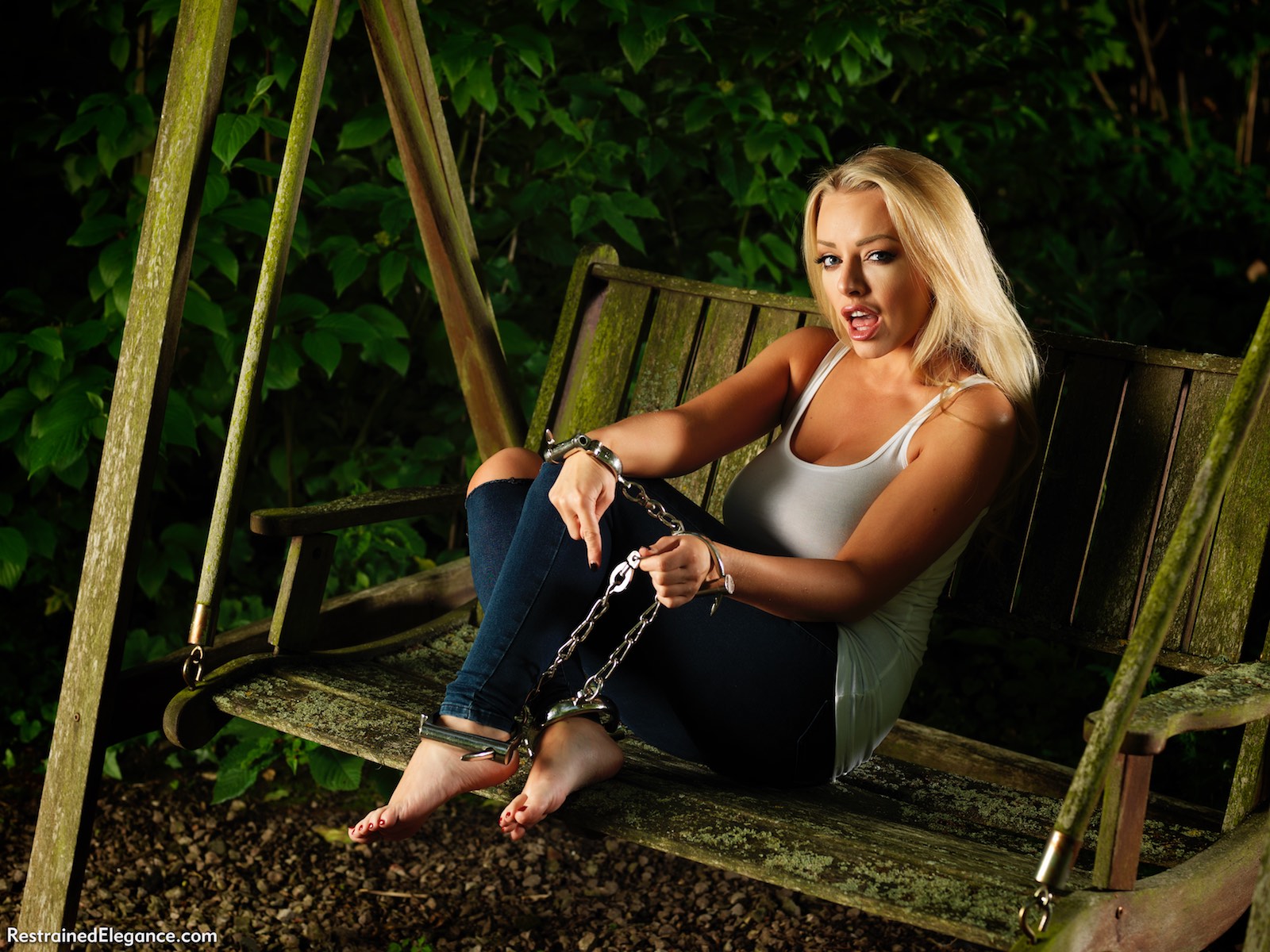Home › Forums › General Chat › A Warm Summer's Evening, Tea on the Lawn…
This topic contains 4 replies, has 3 voices, and was last updated by Hywel 7 years, 7 months ago.
-
AuthorPosts
-
August 24, 2016 at 18:30 #27034
This one inspired a number of thoughts:
- I would have given this five stars, but reverse-prayer ties set my teeth on edge. So I gave it four stars.
- Adding a toe-tie would have been a nice touch.
- I often find that I like the concept of outdoor shots more than the actuality. But in this case it worked very well.
- The depth of field was very well done too. Which brings me to…
- I’d like to see a tutorial, or at least a discussion in the techie talk subforum, about f-stops and depth of field in bondage photography.
September 12, 2016 at 00:35 #27043I’d like to add to what Sablesword says and just say I really loved this update. I normally have a similar reaction to reverse-prayer ties, although I know you take very good care of your models and I didn’t this time. However, the colour, composition, and general feel of the set was fantastic… vibrant and with a slightly dream-like quality, I thought…
Anyway, thank you. It was brilliant.
September 14, 2016 at 13:31 #27060F-stops and depth of field … duly noted. Sounds like a great idea for a tutorial.
Short answer:
The is no such thing as the “right” depth of field for a shot. The mood changes considerably as depth of field shifts, so it is often a case of finding what works.
I have three starting points:
1) Shallow depth of field. I’m going to intentionally focus on selected parts of the image and using depth of field to throw the rest out of focus to de-emphasise. One achieves this with an open aperture, but don’t necessarily rush straight to the lens being wide open. You might end up with the fabled “eyelash in focus, eyeball out of focus” problem. Anything wider than F/4 is shallow on medium format, f/2.8 on full frame, f/2 on crop sensors. I think I shot this set around f/2.8 for the most part, on medium format, with a slightly telephone lens. Hence the nice background blur- helped by a decent physical separation between Cobie and the bushes behind her.2) Girl in focus, background mildly out of focus. This is my default setting because I think often people would like to see most of the girl and the bondage in full length shots and for it to be mostly sharp. I aim for f/8 on medium format, f/5.6 on full frame, f/5 ish on crop sensors. Most of what I shoot is traditionally from f/5.6 to f/11.
3) Deep staging, where for some reason I want a much greater depth of field. Can be very effective to place the girl into the background setting rather than separating her from it. Anything wider than f/11 MF, f/8 FF, f/5.6 ish on crop sensors. Some smaller sensors eg GoPro, phone sensors can ONLY do deep staging- with wide angle lenses on small sensors, effective focus is like 1m to infinity. (Which is why there’s no focus ring on a GoPro).
To achieve shallow depth of field you may need to cut down the light- this set was shot under trees in daylight, if I’d wanted the same thing in direct sunlight I’d have needed a neutral density filter to achieve it.
Cheers, Hywel
September 14, 2016 at 18:34 #27062I’ve been shooting at “f/8 and be there” with a Nikon D90 (crop sensor – “DX” in Nikon terminology). Partly because I was going for maximum sharpness, wanting photos for drawing references, and partly because the D90 has a base ISO of 200, which makes it tricky to go wider than f/8 with studio lights.
But in terms of good looking photos, there’s something to be said for putting the background out of focus. I’m not a fan of shallow depth of field where part of the model is in focus and the rest not. Even when it’s not as extreme as “eyelash in focus; eyeball out of focus.” A more common case that I’d just as soon avoid is the hogtie where the face is in focus and the feet not. Or vice versa. I’ve had this happen on occasion even with f/8 on DX. It’s not a bad effect, but it’s not necessarily my favorite, either.
De-emphasizing the backdrop by putting it slightly out of focus though… And when I’m doing “walking around” shots with ambient light (and a prime lens), it makes a virtue out of necessity, and since the backgrounds for such shots are usually more cluttered anyway, putting the background out of focus is more desirable anyway.
What has me thinking about this more, right now, is that I rented (I’m in the US, so chattels get “rented” while people get “hired”) a Nikon D7100, because I’m thinking of upgrading my D90. The D7100 has a base ISO of 100 instead of 200, so I turned up the power on my studio lights to compensate – but I did think about dropping from f/8 to f/5.6, instead.
If you’re in the middle of a photoshoot, and you want a shallower depth of field for a few shots, do you normally stop and turn down the power on your studio lights to compensate for the increased aperture? Bump up the ISO to compensate to avoid mucking with the studio light settings? I expect that if you’re shooting outdoors with sunlight, you’ll increase the shutter speed – right?
September 16, 2016 at 11:36 #27068Hi,
Yeh, getting feet and face in focus for a hogtie is a constant battle and one which I don’t always win- depends on the settings, the physical space etc.. I try not to faff around with lighting once the model is tied if I can possibly avoid it, so I fall back to “shot focussed on feet, shot focussed on face, shot focussed on shoulder in attempt to do poor man’s hyperfocal technique, then move on.
I also prefer everything on the girl being sharp, or at least pretty close to sharp, where possible. But as you say, when it comes to available light it is a case of embracing necessity and trying to tame the worst excesses. I try not to shoot at f/1.4 unless I REALLY need to, for example.
I don’t often decide to go specifically for a few shots in a set with shallow depth of field. More usually it comes about because of a change in the lighting or the composition.
If the ambient light level suddenly drops (sun goes behind a cloud, which happens in Wales a lot!) I’ll open up to compensate.
If I decide to see how the scene looks with less light, by turning off some strobes, ditto.
But probably the most common cause of shallower depth of field is moving to a longer lens and getting further away from the model- the net visual effect tends to include making the background blur more pronounced. If I’ve been shooting a set at 35 mm and swap to an 85 mm lens this can be a very pronounced change in the images at that point in the set. (Or on the Hasselblad swapping from the 50 mm to 120 mm lenses).
When shooting outdoors, I very rarely use pure sunlight on its own. Even with the high dynamic range on the Sony sensor, it is dicing with burnout.
Most commonly I use the studio flashes and a shoot-through white umbrella to add fill (definite benefit of the powerful 1200 J flashes from the battery powered studio flash units). I use a white umbrella because it gives a fairly softened light without loosing too many stops of power (a softbox loses a lot more for example). And also because umbrellas are cheap to replace and the outdoors can be a bit hard on kit.
With Canons and Sonys, this limits my shutter speed to 1/160th or 1/200th respectively.
Which is why I *really* like the Hasselblad for this scenario- because with the leaf shutter I can sync up to 1/800th of a second. That gives a lot of control over the ratio of fill to sunlight, and lets me underexpose skies for saturation etc..
If there’s an extra body around, I’ll use a sunfire gold reflector for fill. This is a bit hard on the model (she’s effectively looking straight into a reflection of the sun) but looks absolutely gorgeous, so is worth the trouble to shoot that way. Then I can have the shutter speed as high as I like, but have very limited control over the ratio of sunlight to fill. The nicest variation of this is the sun as backlight, under a little bit of shade, and the reflector whacking in as key light.
I can’t honestly remember how I shot the Cobie set- most likely with studio flash turned right down as fill.
This was definitely shot using flash to fill (again with the sun as backlight):

Whereas this one was shot with a reflector as fill:

This Silk Soles shot is a reflector as key, I was standing in a pool of sunlight bouncing the light in while Philippa shot from about 45 degrees away:

Whereas this one is entirely flash lit (but I was trying to recreate the feel of the gold reflector shots):

Cheers, Hywel
-
AuthorPosts
The forum ‘General Chat’ is closed to new topics and replies.
